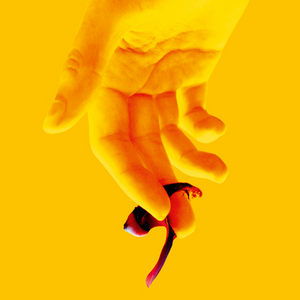MARIA DE BUENOS AIRES is Now Playing at Teatr Wielki
Performances run through 14 May.

Maria de Buenos Aires is the New World, new music, nuevo tango, and tango operita, a new type of opera based on the magnificent rhythm and character of the tango, a dance born on the southeast coast of Latin America. The folk Argentine tango finally saw its bard, Astor Piazzolla, a poet composer who came up with a new way of presenting this passionate dance, drawing inspiration from Stravinsky, Bartok and classical music forms, as well as jazz and electronic rock, and elevated tango to the rank of 'art music'.
He was born near Buenos Aires, in Mar del Plata, a city situated a few hundred kilometres away from the Argentinian capital. In 1925 he moved with his family to New York City, where he took bandoneon classes. In 1934 he performed alongside singer Carlos Gardel in El Día que me quieras, a film of great significance for the history of the tango. Having returned home, he played the bandoneon in orchestras in Mar del Plata and Buenos Aires, before his life took an important turn: he started to write music. On completing composing studies with Alberto Ginastera, he set up his own music ensemble and started to write tangos for it. Winning fist prize in a composer competition for Sinfonia Buenos Aires enabled him to go to Paris and continue his studies with Nadia Boulanger, the doyenne of musical neoclassicism who had raised a generation of European composers. Astor Piazzolla spent the 1960s and 70s synthesising the tango with jazz and rock, immersing himself in the creative ferment of New Your City, setting up subsequent bands, of which the Sextet performed and recorded until 1990. In a show of recognition for the merits of his work, since the late 1980s Piazzolla's pieces were included in the repertoire of such well-known virtuosos as violinist Gidon Kremer, pianist Emanuel Ax, and cellists Yo-Yo-Ma and Mstislav Rostropovich, to whom the Argentinian dedicated Le Grand Tango.
Maria de Buenos Aires (1968) was the pinnacle of Piazzolla's artistic ambitions. In it, he combined opera and dance, which had been done previously but here classical ballet was replaced with the tango. Beautiful and doomed, born 'on a day that God was drunk', the girl manages to escape poverty and her pathological family and gain much-desired freedom. Seduced by the rhythm of the tango, she descends into the depths of the huge city, becomes a prostitute, learns all about sex and crime, to finally get murdered by a pack of tramps, gangsters, and brothel madams. She gains a new life, however, as her own shadow walking the streets of the metropolis.For the composer, the eponymous Maria is an allegory of his beloved city.
This production of Maria de Buenos Aires is directed by Wojciech Faruga, artistic director of the Polski Theatre in Bydgoszcz, Poland, former head of the Korczak International Festival of Theatre for Children and Young People.
Comments

Videos
.png)